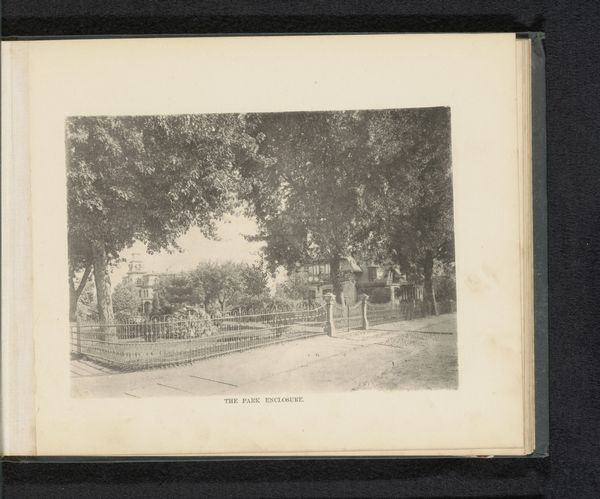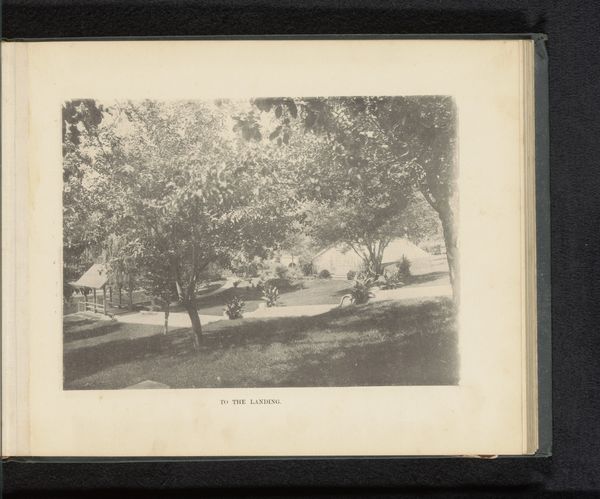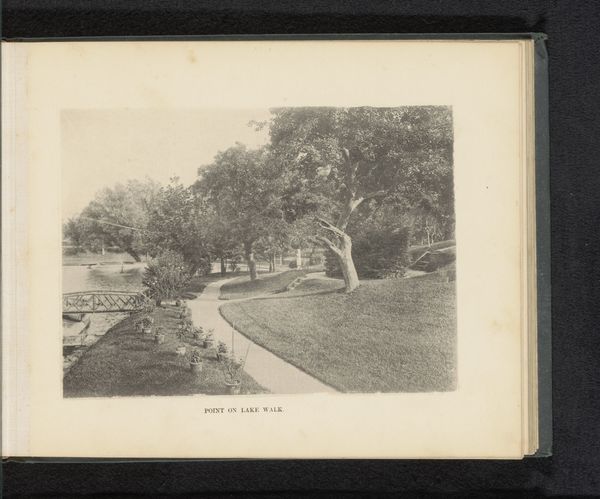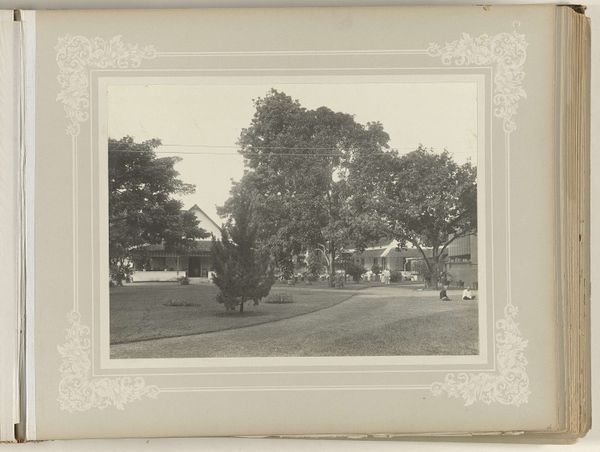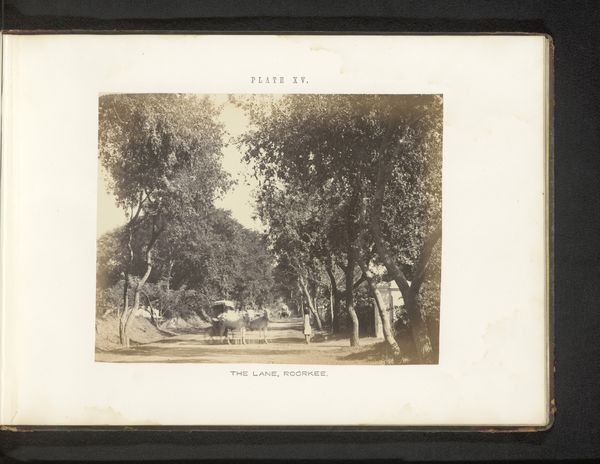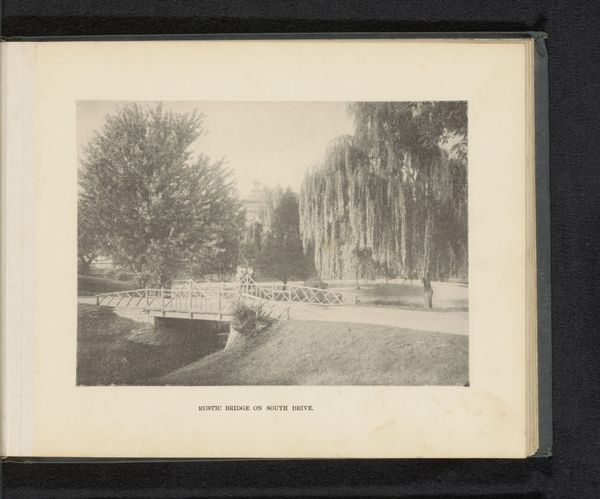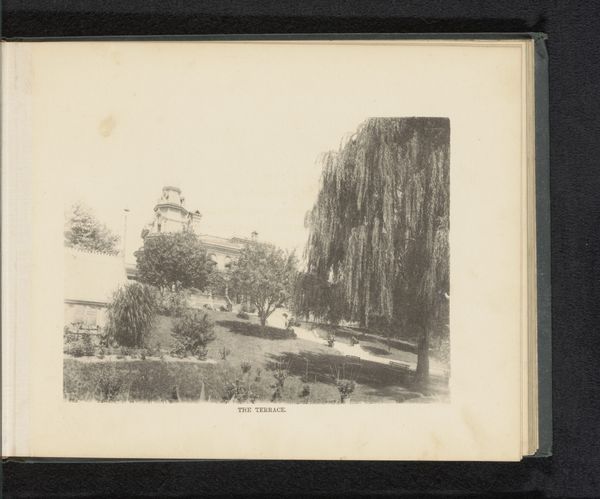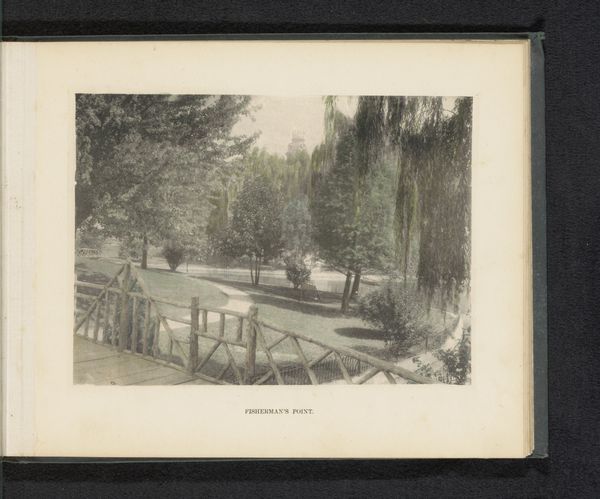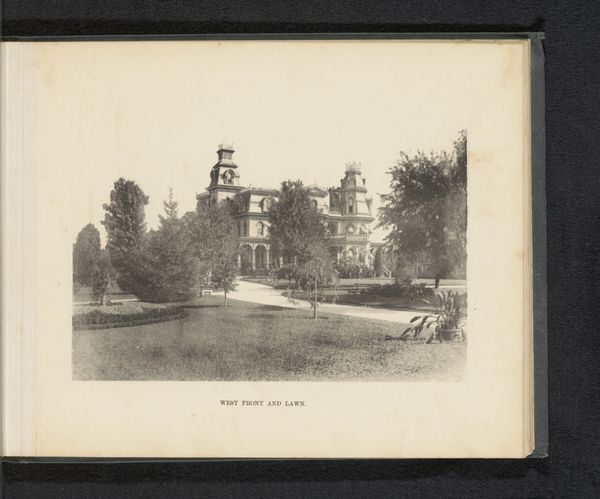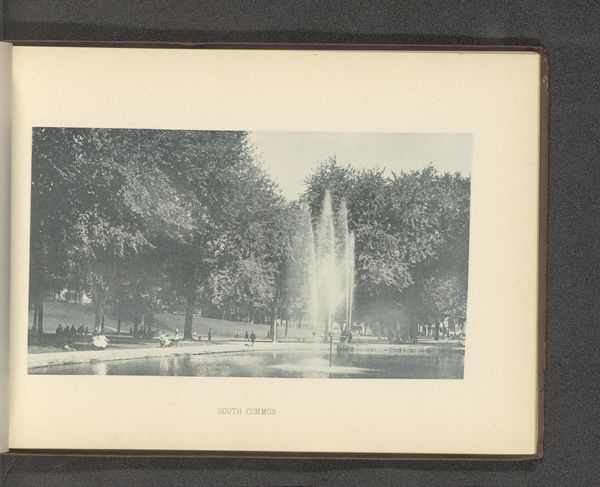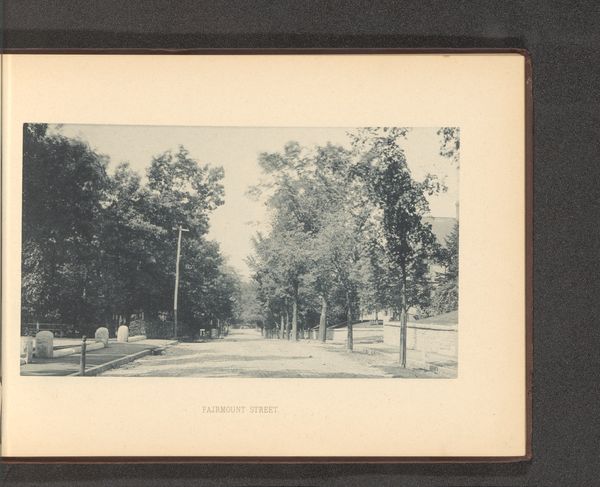
Gezicht op treurwilgen op het landgoed van George Gill Green in Woodbury before 1889
0:00
0:00
photography, gelatin-silver-print
#
impressionism
#
landscape
#
photography
#
gelatin-silver-print
Dimensions: height 138 mm, width 189 mm
Copyright: Rijks Museum: Open Domain
Curator: Here we have an early photograph, a gelatin-silver print titled "Gezicht op treurwilgen op het landgoed van George Gill Green in Woodbury," which translates to "View of Weeping Willows on the Estate of George Gill Green in Woodbury." The piece dates from before 1889. Editor: It possesses a subdued, almost melancholic beauty. The dominant weeping willow commands immediate attention. Its cascading branches create a sense of enclosure and serenity. The muted tones of the gelatin silver print contribute to the tranquil yet somewhat somber mood. Curator: The weeping willow itself is a fascinating symbol, often associated with mourning, loss, and sorrow across different cultures. However, it can also signify resilience, transformation, and even immortality, given its ability to bend and adapt. Given the date of the photograph, the cultural fascination with mourning practices in the Victorian era likely informed how it was received. Editor: Yes, I see that duality mirrored in the composition. The willow dominates, but other elements—a small bridge, a strategically placed bench—provide a sense of carefully orchestrated peace rather than oppressive grief. The landscape seems deliberately constructed. The subtle gradation of tone in the print also directs the eye, reinforcing a focal point that isn't solely dependent on symbolic content. Curator: Indeed, the photograph captures more than just a natural landscape. It's a constructed, controlled environment reflecting the aspirations and sensibilities of its owner. The deliberate placement of these elements – bench, bridge, various plant life – reinforces the overall harmony. It all conveys a sense of carefully cultivated beauty and social position. Editor: I also see how the materiality of the photograph, the softness of the gelatin silver print, actually contributes to the sense of memory and distance, evoking an echo of what the depicted scene represented or was meant to project. This texture contrasts to how we visually read sharpness and clarity in modern image construction. Curator: Considering those textures, it leads me to wonder about the photographer’s intentions: to document, perhaps to immortalize, or simply to create an aesthetic object in its own right? I’m also struck by the choice of black and white rather than early attempts at color photography, reinforcing its place as an artifact within a specific visual regime. Editor: A final thought. The overall image transcends its era to connect with an enduring sense of nostalgia for a natural, ideal setting – even in the context of wealth and the estate lifestyle of the Gilded Age. The interplay of form and tone allows it speak to those feelings of serenity still today.
Comments
No comments
Be the first to comment and join the conversation on the ultimate creative platform.
